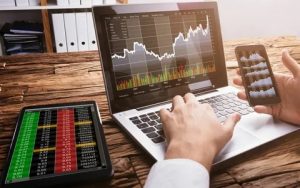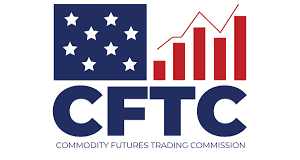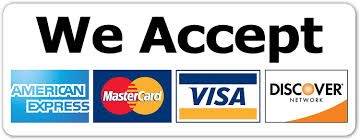
Futures are forward contracts on a specific good. Futures contracts on commodities are called commodity futures, those on stocks, bonds, indices and currencies are called financial futures. Depending on whether they are designed as short or long positions, they oblige the purchaser of the contract to a certain quantity and quality of the underlying asset deliver or buy at a specified future date at a price fixed at the time of the transaction.
The seller of the contract is subject to the same obligations as a mirror image. The parties can only evade these obligations by reselling the contract. This is called closing out the position. Futures are usually bought on margin. This means that the buyer does not pay the full value of the contract, but only pays a deposit known as margin. This security deposit is variable. If the margin, i.e. the ratio of the security deposit to the contract value, increases during the term of the contract, the buyer usually receives an interest credit. If the margin falls, the broker can usually request margin payments or close out the position.

Futures are standardized contracts that, like options, are entered into between two parties at a fixed price and expiry date. They are contracts for the delivery of an underlying product at an agreed time in the future (future) at an agreed price, hence the name. Futures are a type of derivative because the underlying product itself is not owned by the investor. Rather, the future derives its value from the price of an underlying asset. This could be a commodity, a financial product, or a statistic.
How do futures work?
A futures contract is a tradable contract that relates to the purchase (long) or sale (short) of an underlying asset. Delivery will take place in the future at an agreed date and rate. Buyers and sellers have conflicting expectations of how the price of the underlying asset will perform. A buyer makes a gross profit if the price of the underlying asset is up at the close and a gross loss if the price of the underlying asset is down. When you enter a long position when trading futures contracts, you assume that the price of the underlying asset will rise. As with many other derivatives, futures have a contract size in which each future has a fixed number of the underlying product as an underlying asset.
How are futures settled?
A futures deal’s payment takes place at the conclusion of the predetermined term. This can be done through physical delivery or cash settlement. Index futures, such as B. FTSE futures are usually settled in cash. In the case of physical delivery, the specified goods are actually delivered. However, that doesn’t happen often. As a rule, they are sold before their validity expires.
One of the main reasons for investing in this type of financial product is to make a profit by taking advantage of price differences in the underlying securities. Therefore, cash settlement takes place more frequently than physical delivery. There is no money involved in buying and selling. Only at arrival must the agreed-upon sum be fulfilled. However, brokers require a down payment because of the large commitments made.

Suppose you expect a stock index to go up. It is at 600 points and you are considering a futures contract with a contract size of 200. This futures price would be worth around $120,000. When trading futures, you don’t pay this entire amount at the time of purchase, but typically deposit an initial margin to complete the contract. Suppose the margin rate is 15%. You would get $120,000 exposure to the underlying asset if you deposit at least $18,000 as margin into your account. This means that with a futures contract you can get a large exposure for a small initial margin.
Futures are paid everyday, in contrast to options. This means that if the future has gained 3 points at the end of the trading day, you will receive three times the $200 multiplier, i.e. an amount of $600. Note that with futures it is also possible to lose more than your deposit as the contract size is larger than the margin.
Futures and hedging
Futures are a popular derivative for risk hedging. Companies and investors use them to neutralize risks as much as possible. It does this by removing the uncertainty of a future price of a position or financial product. You can use short hedges and long hedges. In a short hedge, you take a short position on the contract. These are typically initiated by traders who own an asset and are concerned that prices may fall before the sale date. A long hedge, on the other hand, occurs when you take a long position. For example, if a company knows it needs to buy a certain item by a future date and the current spot rate is higher than the future rate, it can lock in the lower rate
Trading futures
Before trading futures, keep the following in mind:
Leverage the ability to manage a sizable investment with only a small sum of money. You should be aware that while this presents an opportunity for high gains, it also carries the risk of substantial losses.
- Explore a variety of investments, such as those in grains, livestock, interest rates, gold as well as other metals, the oil and energy industries, and much more.
- After Hours Market. Futures contracts trade at many various times. Futures markets can also predict how core markets will open. For instance, traders will likely be informed by stock index futures concerning whether the stock market will open higher or lower.
- Liquidity. There is a lot of activity on the futures market, particularly on the high volume contracts, and it is quite busy. This makes entering and exiting transactions simpler. Liquidity issues might exist for less popular, more obscure contracts.
- Lastly is the topic of Hedging. If you already hold a position in a company or commodity, you can utilize a futures contract to safeguard your unrealized gains or reduce your losses. This gives you an option to just leaving your current job. An illustration of this would be to use a short position to balance out a long portfolio.
Opening a new account
You must first open a regular account in order to begin trading futures. An solo or joint account may be used for the regular account. Additionally, you will need to qualify for and have your account’s margin rights granted.
Micro E-Mini Futures: What Are they?
On May 6, 2019, the CME Group introduced micro e-mini agreements for four significant indices. Compared to the current e-mini futures, these contracts offer market players significantly cheaper exposure to price changes in the S&P 500, Russell 2000, Dow Jones 30, and Nasdaq 100 indices. Based on the broker you select, you can effectively hedge your whole portfolio for futures trading by going long or short markets like the S&P500 and Nasdaq100 with as little as $175 of day-trading margin each contract.

These contracts immediately shown great popularity. On June 3, 2019, over 417,000 contracts of the micro e-mini S&P 500 futures were traded, though activity has since dwindled. These micro contract volumes are about 25% of what their considerably more seasoned e-mini cousins are trading in. The contracts are traded in a manner similar to futures trading from Sunday at 5 p.m. central time to Friday at 4 p.m. central time, or nearly 24 hours a day.
How Do Micro E-Mini Futures Work?
When the main indexes’ values grew too high for the typical trader in the late 1990s, e-minis were introduced. Index futures are a type of futures contract that enables buyers to invest or sell a monetary index today for a future settlement date. The magnitude of the micro e-mini contracts is one-tenth that of earlier e-mini contracts, bringing down the price of the trade to one-tenth that of e-minis.
The price of the S&P 500 and Russell 2000 e-minis is $50 times the index value at agreement expiration, compared to merely $5 for the micro e-mini for those two.
The Dow Jones 30 micro e-mini is $0.50 times the index value, and the micro e-mini contract for the Nasdaq 100 index is $2 times the index value. Therefore, the micro e-mini is valued at $14,750 as opposed to the e-mini, that would be valued at $147,500 if the S&P 500 index were to be at 2950.
The 500 U.S. large-cap equities that the S&P 500 index tracks are managed by the micro e-mini S&P 500 index futures. The Russell 3000 array of companies includes 2,000 small-cap stocks, which are exposed through the micro e-mini Russell 200 futures markets.
With the micro e-mini Dow Jones Industrial Average futures and the micro e-mini Nasdaq 100 futures trading, you may give publicity to the 30 blue chip stocks that make up the Dow Jones Industrial Average as well as the 100 top non-financial U.S. large-cap stocks.
With the exception of the Dow micro e-mini future, that will list 4 months, micro E-mini futures would be posted on the conventional U.S. Equity Index futures cycle with five concurrent futures that expire against the starting index value on the third Friday of March, June, September, and December. The CME has not yet stated whether it will allow trading in choices for micro e-mini futures.
Learn more about Emini trading system.
See Our – Why use an Automated Trading System ATS
See Our Limited Time “Promo Offer” and see how you can become our Client!














